
Every AF-Nikkor Nikon produced between 1983 and around Y2K was an AI-S lens with an additional CPU interface and an AF coupling. Still today, there are a lot of such lenses in Nikon's lens lineup. But every newer lens - introduced around Y2K or later - is of the 'G' type. A 'G' lens is easily regognisable by the lack of an aperture ring.
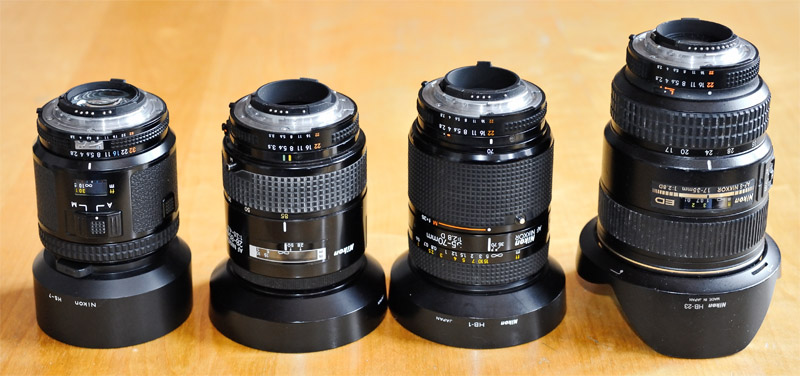
|
|
The four different interface types of AF lenses with an aperture ring. From the left to the right: AF for F3AF, AF, AF-D, AF-I/AF-S |
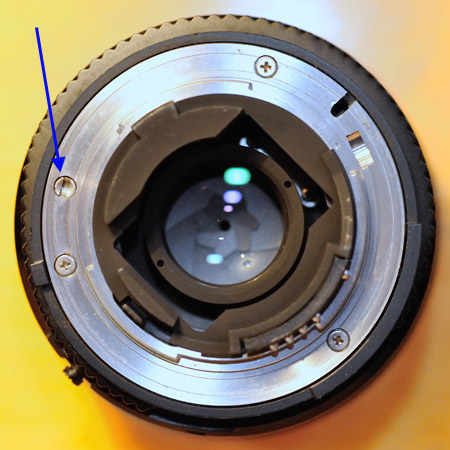
|
|
The "screwdriver" coupling of an AF lens (Micro 55mm f/2.8). |
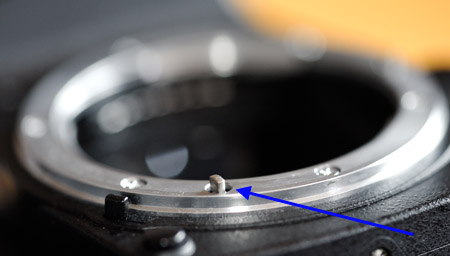
|
|
The "screwdriver" coupling of a camera (D70). |
Forget AF lenses designed for the F3AF! These rare lenses are not compatible with DSLRs. Of course, if you disable the CPU interface of such a lens with a knife or so, it behaves like an ordinary AI-S lens and is then usable on your DSLR. Maybe one day I will do so with my AF-Nikkor 80mm f/2.8. This lens delivered great results on my F4 and it has a very good reputation in the digital world, too.
Between an AF and an AF-D Nikkor there is only a minor difference: via its CPU interface an AF-D lens provides an information about the focus distance the lens is currently set to. The camera improves its matrix metering a bit with this additional parameter. Both types share the "screwdriver" AF coupling. Only the more expensive DSLRs support this coupling (as of January 2013: D1, D2, D3, D4, D50, D70, D80, D90, D100, D200, D300, D600, D700, D800, D7000). On the other DSLRs these lenses work fine, too, but you must focus manually.
AF-I and AF-S lenses are AF-D lenses with an integrated AF-motor instead of the screwdriver coupling. The AF-I lenses were the first generation with a rather noisy AF drive. The next generation was based on Nikon's "Silent Wave Drive" and Nikon called them AF-S lenses, which is still the current designation. These lenses are fully compatible with each DSLR.
As a DSLR shooter you can stop reading at this point - the rest of this article is not of interest for you.
As mentioned above, all of these lenses are AI-S lenses and are therefore perfectly usable in conjunction with every Nikon SLR without a CPU interface but with an AI coupling (e.g. Nikkormat FT3, Nikon F2A, F2AS, F3, EL2, FE, FE2, FM, FM2, FM3a, FA, EM, FG, FG-20, F-301).
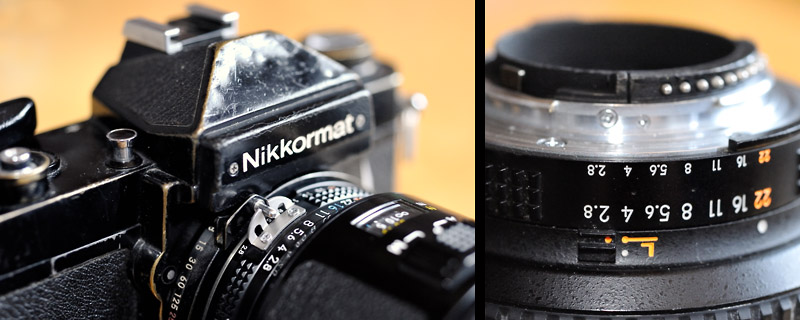
|
|
The four types of AF lenses discussed here can be used in conjunction with pre-AI cameras, too. The lenses for the F3AF already have a mounted meter coupling shoe (image on the left, AF 80mm f/2.8 mounted on a Nikkormat FT2). The other types can be used with stop-down metering. Alternatively a coupling shoe is mountable on many AF, AF-D or AF-S lenses, the screw holes are already marked on the aperture ring (the image on the right shows these marks on the aperture ring of the AF-S 17-35mm f/2.8). Ask your Nikon service for details. Maybe you can also do it yourself. I have not tried it yet. |
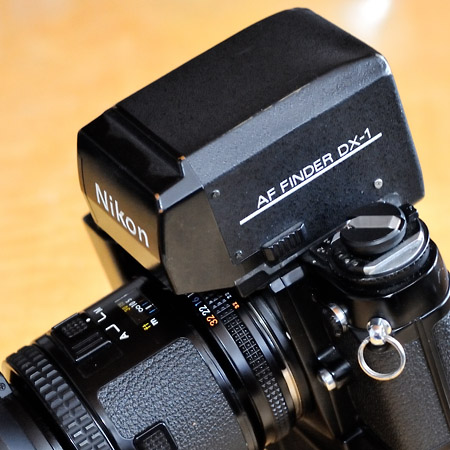
|
|
The AF finder DX-1 is a bulky thing! |
The F3AF was introduced in 1983. It was one of the first AF system cameras ever. Only two lenses for this camera were built: the AF 80mm f/2.8 and the AF 200mm f/3.5 IF-ED. They have an integrated AF drive. The AF electronics of the F3AF is integrated in the special AF Finder DX-1. The only difference between the F3AF body itself and a standard F3 body are the CPU contacts within the bayonet mount and the corresponding contacts for the DX-1. The DX-1 is also usable in conjunction with a normal F3 body. The finder's autofocus system then works as an electronic rangefinder.
Nikon's next autofocus camera was the non-professional F-501 (in US: N2020). It was introduced 1986 with a couple of AF lenses with a screwdriver AF coupling. Not that well-known: the F-501 also supports the AF system of the F3AF lenses!
The following generation of AF cameras was introduced between 1987 and 1989. The professional F4 fully supports the F3AF lenses. They are usable in conjunction with the semipro F-801, but without autofocus. The consumer models F-401 and F-601 are incompatible to the F3AF lenses. Even at the end of the 80s it was already true: the more you pay, the more compatibility you get.
As far as I know, no newer Nikon AF camera ever supports the exotic F3AF lenses.
These lenses are fully supported by every analogue Nikon AF SLR. The first camera with restrictions for the screwdriver AF coupling was the D40 from 2006.
AF-I lenses were introduced in 1992. The AF-I and first AF-S lenses were fast telephoto lenses like a 400mm f/2.8. By the end of the 90s the f/2.8 zooms came in an AF-S version. In the 90s, the integrated autofocus drive was a technology for expensive lenses. Cheaper cameras of that time did not support automatic focussing with AF-I/AF-S lenses. Only these 90s cameras support the internal AF: F90 (US: N90), F70 (US: N70), F90x (US: N90s), F5, F100, F80 (US: N80). Not to forget: the queen of compatibility, the F4 from 1988, also supports AF-I/AF-S lenses! On the other cameras of the 80s and 90s AF-I/AF-S lenses work fine, but AF is not available.
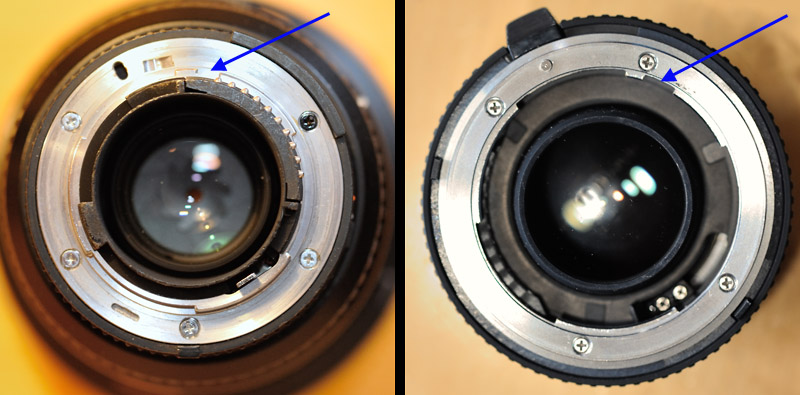
|
|
AF-S lenses are mechanically recognisable. Shown on the left is the mount of the AF-S 17-35mm f/2.8. One of the three flanges of the F-Mount is disconnected, see arrow. On the right you can see the lens mount of a TC-14EII. It has the counterpart of the disconnected flange. Therefore it is not possible to mount other lenses than AF-I/AF-S ones. With a saw it is possible to remove this restriction, instructions can be found on the Web. As you can see, I have not modified my TC-14EII. Please note: The 17-35mm is not mountable on the TC-14EII, because the outermost lens elements will touch! |